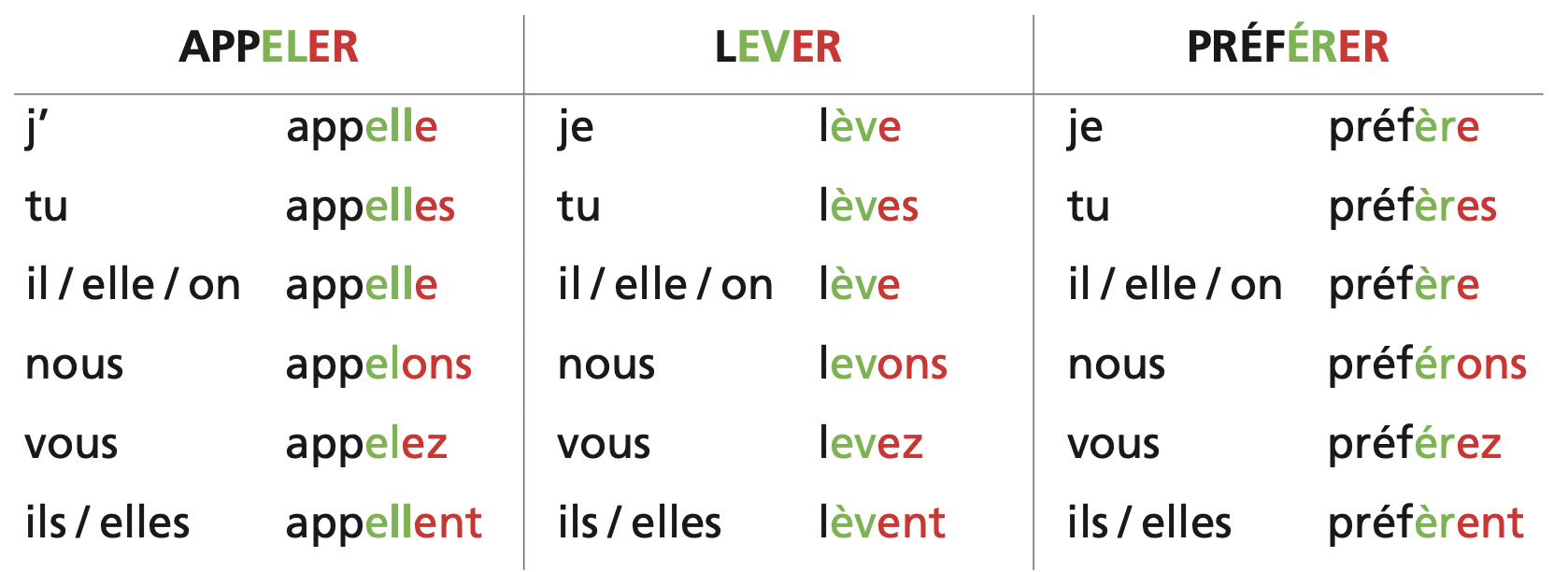Lesson: Understanding a French Room Tour Dialogue
lesson 1 ⎥ lesson 2 ⎥ lesson 3 ⎥ lesson 4 ⎥ lesson 5 ⎥ lesson 6 ⎥ lesson 7
In this lesson, you’ll learn how to understand and use common French phrases used in a conversation when someone is being shown a room. This dialogue revolves around Nana, a language student in France, being introduced to her new room by her host family. We will break down the conversation and identify key phrases and expressions.
Situation: Nana is coming for a language stay in France. She has just arrived at the airport where two members of her host family are waiting for her. It’s the first time they meet.
Here’s the complete dialogue between Julie, Nana, and a host family member:
Key Phrases and Vocabulary
- Chambre – Room
- Vue – View
- Bureau – Desk
- Orienté(e) – Oriented/Facing
- Armoire murale – Wall-mounted wardrobe
- Tiroir – Drawer
- Valise – Suitcase
- Secrétaire – Secretary desk
- Étagère – Shelf
- Enceinte Bluetooth – Bluetooth speaker
✚ Expressions for Describing a Place
1. “Être orienté à + direction”
This expression is used to describe the orientation or direction a place is facing.
- From the dialogue: “Elle est orientée au sud.” (It faces south.)
- Additional examples:
- La maison est orientée à l’est. (The house faces east.)
- La fenêtre est orientée au nord. (The window faces north.)
2. “Avoir vue sur”
This expression describes the view a place has.
- From the dialogue: “Elle a vue sur le fleuve.” (It has a view of the river.)
- Additional examples:
- Mon appartement a vue sur la mer. (My apartment has a view of the sea.)
- Le balcon a vue sur le jardin. (The balcony has a view of the garden.)
3. “Être + adjectif”
This structure uses an adjective to describe a place’s quality or condition.
- From the dialogue: “Elle est agréable.” (It’s pleasant.)
- Additional examples:
- La pièce est lumineuse. (The room is bright.)
- La maison est spacieuse. (The house is spacious.)
4. “Être + lieu + de + superficie”
This expression describes the area or size of a place.
- From the dialogue: “C’est une chambre de 20 mètres carrés.” (It’s a 20-square-meter room.)
- Additional examples:
- C’est un appartement de 50 mètres carrés. (It’s a 50-square-meter apartment.)
- C’est un terrain de 1000 mètres carrés. (It’s a 1000-square-meter plot of land.)
✚ Understanding the Conjugation of French Verbs “s’appeler,” “se lever,” and “préférer”
In French, some verbs in the first group (-er verbs) have unique graphical conjugation patterns that can be challenging for learners. This lesson will focus on the verbs “s’appeler” (to call oneself), “se lever” (to get up), and “préférer” (to prefer), highlighting their unique conjugation features with examples from the text and additional examples.

1. “S’appeler” – Doubling the ‘l’
The verb “s’appeler” has a distinct conjugation pattern where the ‘l’ is doubled in the present tense for most forms.
- From the text: “Ça s’appelle un secrétaire.” (It’s called a secretary.)
- Additional examples:
- Je m’appelle… (My name is…)
- Ils s’appellent… (Their names are…)
- Tu t’appelles comment? (What’s your name?)
Notice that the ‘l’ is doubled in all forms except “nous” and “vous,” which retain a single ‘l’:
- Nous nous appelons… (We call ourselves…)
- Vous vous appelez… (You call yourself…)
2. “Se lever” – Adding an Accent Grave
The verb “se lever” uses an accent grave (`) over the first ‘e’ in all forms except “nous” and “vous” to maintain the correct pronunciation.
- Additional examples:
- Je me lève à sept heures. (I get up at seven o’clock.)
- Elle se lève tard le dimanche. (She gets up late on Sundays.)
For “nous” and “vous,” the first ‘e’ remains unchanged:
- Nous nous levons… (We get up…)
- Vous vous levez… (You get up…)
3. “Préférer” – Changing the Accent Aigu to Accent Grave
The verb “préférer” changes the accent on the second ‘é’ from an accent aigu (´) to an accent grave (`) in most forms to indicate pronunciation.
- Additional examples:
- Je préfère le café. (I prefer coffee.)
- Tu préfères le thé. (You prefer tea.)
- Ils préfèrent le chocolat. (They prefer chocolate.)
The accent remains unchanged for “nous” and “vous”:
- Nous préférons… (We prefer…)
- Vous préférez… (You prefer…)
✚ French Ordinal Numbers and the Expression “Date de + Nombre Ordinaux”
In French, ordinal numbers (les nombres ordinaux) are used to describe positions or ranks in a series, often indicating dates or specific points in a sequence. This lesson explores the expression “date de + nombre ordinaux” and how ordinal numbers are used in various contexts.
Using “Date de + Nombre Ordinaux”
The expression “dater de + nombre ordinaux / siècle” is used to indicate when something originates or was created. Let’s use an example from a previous lesson:
- From the text: “Il date du 19e siècle.” (It dates back to the 19th century.) Here, the ordinal number “19e” (19th) is used to indicate the century.
Ordinal Numbers in French
Here’s a list of common ordinal numbers:
- 1er/1ère – Premier/Première (First)
- 2e – Deuxième (Second)
- 3e – Troisième (Third)
- 4e – Quatrième (Fourth)
- 5e – Cinquième (Fifth)
- 6e – Sixième (Sixth)
- 7e – Septième (Seventh)
- 8e – Huitième (Eighth)
- 9e – Neuvième (Ninth)
- 10e – Dixième (Tenth)
Additional Examples
Ordinal numbers are commonly used in rankings, and sequences. Here are some examples to illustrate their use:
- Positions and Rankings:
- J’ai terminé à la 2e place. (I finished in second place.)
- C’est la 3e fois que tu me dis ça. (It’s the third time you’ve told me that.)
- Sequences and Orders:
- Le 1er étage. (The first floor.)
- La 2e question du test. (The second question of the test.)
✚ Using “Qu’est-ce qu’elle est…” for Emphasis in French
The French expression “Qu’est-ce qu’elle est…” is a common way to add emphasis to a statement. It’s used to stress a particular quality or characteristic of a noun, adding emotional weight to the description. This lesson will break down how this expression works and offer examples to illustrate its use in context.
Structure and Usage
The structure “Qu’est-ce qu’elle est…” is typically followed by an adjective to describe a characteristic. It can be used with different subjects, such as people, objects, or places. This construction translates to “How…” in English, conveying a sense of surprise, admiration, or emphasis.
Example from the Dialogue
- Nana: “Qu’est-ce qu’elle est grande!” (How big it is!)
Here, Nana expresses her surprise or admiration at the size of the room.
Additional Examples
To further illustrate how this expression is used, let’s look at a few more examples along with their translations:
- Qu’est-ce qu’il est intéressant, ce livre!
- How interesting this book is!
- This expression emphasizes the interest level of the book.
- Qu’est-ce qu’il est lourd, ce frigo!
- How heavy this fridge is!
- This emphasizes the weight of the refrigerator.
- Qu’est-ce qu’elle est belle, cette ville!
- How beautiful this city is!
- This emphasizes the beauty of the city.
- Qu’est-ce qu’il est fort, ce café!
- How strong this coffee is!
- This emphasizes the strength or intensity of the coffee.
🍀 Exercises to Practice Understanding 🍀
🔷 Exercise 1: Comprehension Questions
- How big is the room?
- What view does the room have?
- What does Julie offer to carry?
🔷 Exercise 2: Fill in the Blanks
- Nana says, “Le bureau est _______.” The desk is beautiful.
- The host says, “Les tiroirs _______ à clé.” The drawers have locks.
- Julie says, “Tu peux ranger tes _______ sur les étagères.” You can store your books on the shelves.
Exercice 3 :True or False Exercise Based on the Dialogue
- La chambre fait vingt mètres carrés.
- Le bureau est moderne.
- On appelle ce bureau un secrétaire.
- Nana est contente de la chambre.
Training :
By mastering this vocabulary and understanding this dialogue, you’ll gain confidence in French conversations about room tours and room features. Use the exercises to test your comprehension and enhance your French skills.


